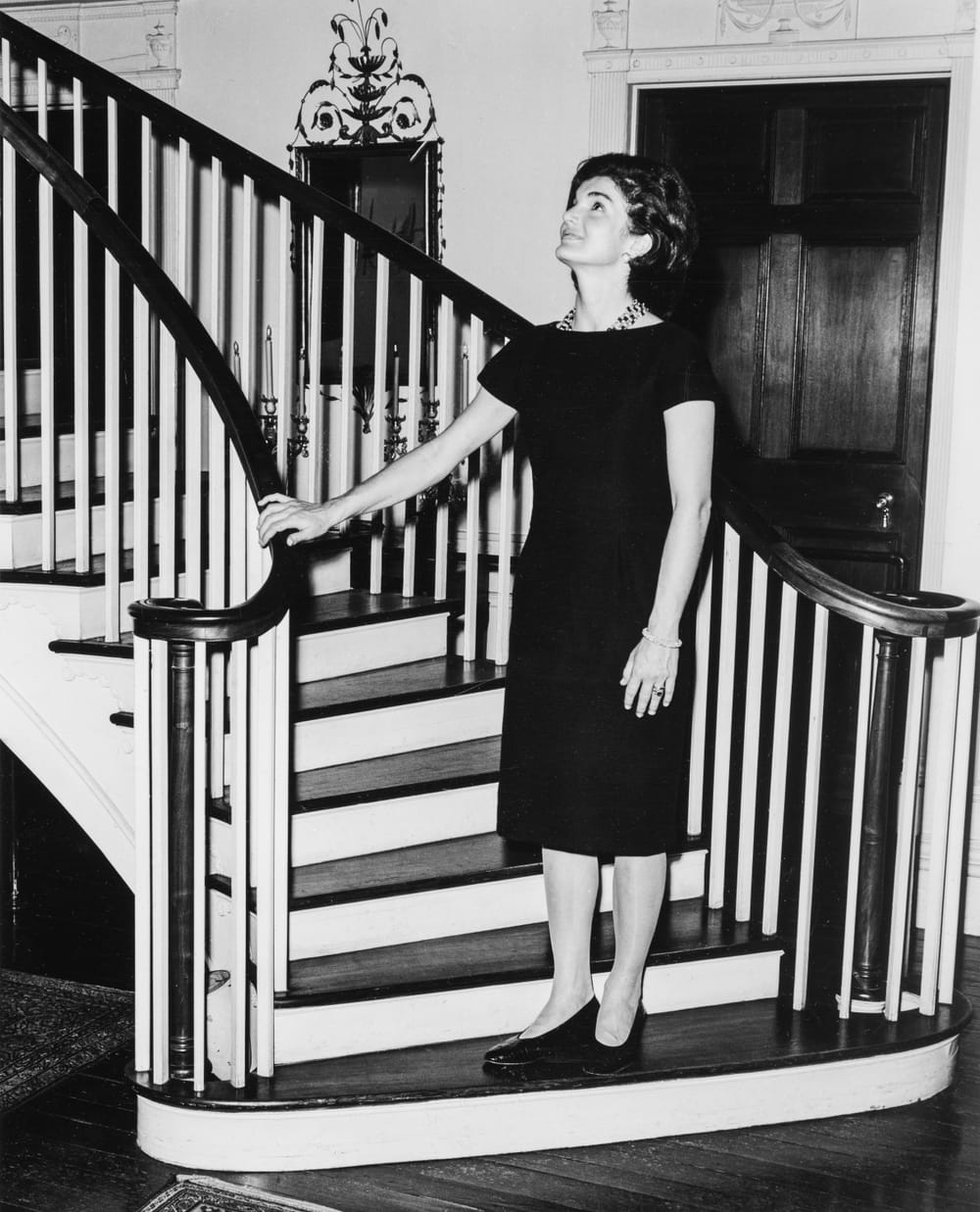Stay in the Loop
BSR publishes on a weekly schedule, with an email newsletter every Wednesday and Thursday morning. There’s no paywall, and subscribing is always free.
How the White House became an American museum
Winterthur Museum presents From Winterthur to the White House: Jacqueline Kennedy and Henry Francis du Pont

In 1961, our youngest-ever First Lady appointed a Delaware octogenarian to lead her unprecedented project: restoring the White House. Now, a new exhibition at Winterthur Museum explores this fruitful (though perhaps not always smooth) collaboration, which changed the look and scope of “the nation’s house,” transforming it from a tourist destination into a museum with American decorative arts front and center in our national view.
From Winterthur to the White House: Jacqueline Kennedy and Henry Francis du Pont has been admirably curated by Elaine Rice Bachmann, co-author (with James Abbott) of Designing Camelot: The Kennedy White House Restoration. At the entrance, larger-than-life photographs of Jacqueline Kennedy and Henry Francis du Pont, both in evening dress, invite viewers to walk a red carpet back to the 1960s. Bachmann sifted through mounds of historical detail and reams of documents to create a cogent, fascinating look at how and why the White House was transformed.
“Hardly anything of the past”
When John F. Kennedy assumed the presidency in 1961, Jacqueline Bouvier Kennedy was surprised and chagrined to discover that the White House furnishings were a hodgepodge acquired over many administrations with little thought for their import: “When we came here, we found hardly anything of the past in the house.” For instance, after a major structural overhaul during the Truman administration, the New York department store B. Altman supplied much of the furniture. And what historical furnishings survived were stored in strange nooks and corners—an 18th-century bust of George Washington was discovered in a men’s room and a James Monroe-era pier table was being used as a sawhorse in a workshop.
Stunned, Kennedy determined to establish a curated historical program (dependent on private fundraising) that could source furnishings of museum quality. To that end, she titled her work a “restoration, not redecoration” and put together a prestigious committee. After a visit to Winterthur, she enlisted du Pont, the era’s most avid and esteemed collector of Americana, to head the project. Du Pont was an avid Francophile, and he made it his mission (as he had at Winterthur, then open to the public for a decade) to open her eyes to fine American craftsmanship.
The world tunes in
The Winterthur exhibition opens with a visual reference to Kennedy’s televised tour of the White House, with vintage studio cameras pointed at a reproduction of the iconic red suit she wore on air. The exhibition is packed with fascinating archives, images, and ephemera—including telegrams (anyone remember them?), letters, typed lists, thank-you notes, and photographs—as well as furniture and decorative pieces on loan or from Winterthur’s collection.

It focuses on three iconic White House areas: the Green, Red, and Blue Rooms. Each section is cleverly designed to showcase the transformation process via furniture and textiles, memorabilia, decorative pieces, and swaths of color that meld into oversize architectural renderings. These “color rooms” were always a White House feature, but Kennedy brought them into historical focus. Because of her work, the rooms may have been changed, but under professional guidance. In 1961, Kennedy hired Lorraine Waxman Pierce, a graduate of the Winterthur program, as curator—a post that still exists—and in 1962 she had the White House designated as a museum, ensuring its contents would be properly cared for.
A fascinating exhibition section focuses on Kennedy’s groundbreaking television broadcast on February 14, 1962. There is actual footage from her live White House tour (she scripted her own narration) that is surprising for her ease in front of the camera and the depth of her knowledge and passion. The unprecedented CBS/NBC-TV event was watched live by 56 million Americans (one-third of the country’s population) and eventually by more than 80 million people. French and Spanish versions were made, which Kennedy herself dubbed, and people in 50 countries eventually viewed the film.
In Jackie’s footsteps
The museum offers a house tour titled “Walking in Jackie’s Footsteps” that recreates du Pont’s route as he guided the First Lady around his house, and in a short video, Bachmann reads Kennedy’s effusive letter of thanks for her eye-opening visit. The exhibition, impeccably constructed by Baltimore’s Charles Mack Design, makes cogent and stimulating use of a plethora of potentially overwhelming details. Du Pont’s impeccable Americana collecting brought credibility to Kennedy’s efforts and vision, and her enormous popularity lifted him onto the national stage and validated his life’s work. From Winterthur to the White House is a reminder that while this collaboration is receding into 20th-century American history, it’s well worth revisiting, remembering, and celebrating.
What, When, Where
From Winterthur to the White House: Jacqueline Kennedy and Henry Francis du Pont. Through January 8, 2023, at Winterthur Museum, Garden, and Library, 5105 Kennett Pike, Winterthur, DE. $8-$22; kids under two are free. (800) 448-3883 or winterthur.org.
Masks are not required in the museum, but must be worn on house tours.
Accessibility
Winterthur Museum has accessible parking and the museum, shuttle buses, garden trams, and most walking paths are wheelchair and stroller accessible; wheelchairs and strollers are available at no cost. With advance notice, assistive listening systems and sign-language interpreters are available. Service animals are welcome.
Sign up for our newsletter
All of the week's new articles, all in one place. Sign up for the free weekly BSR newsletters, and don't miss a conversation.

 Gail Obenreder
Gail Obenreder